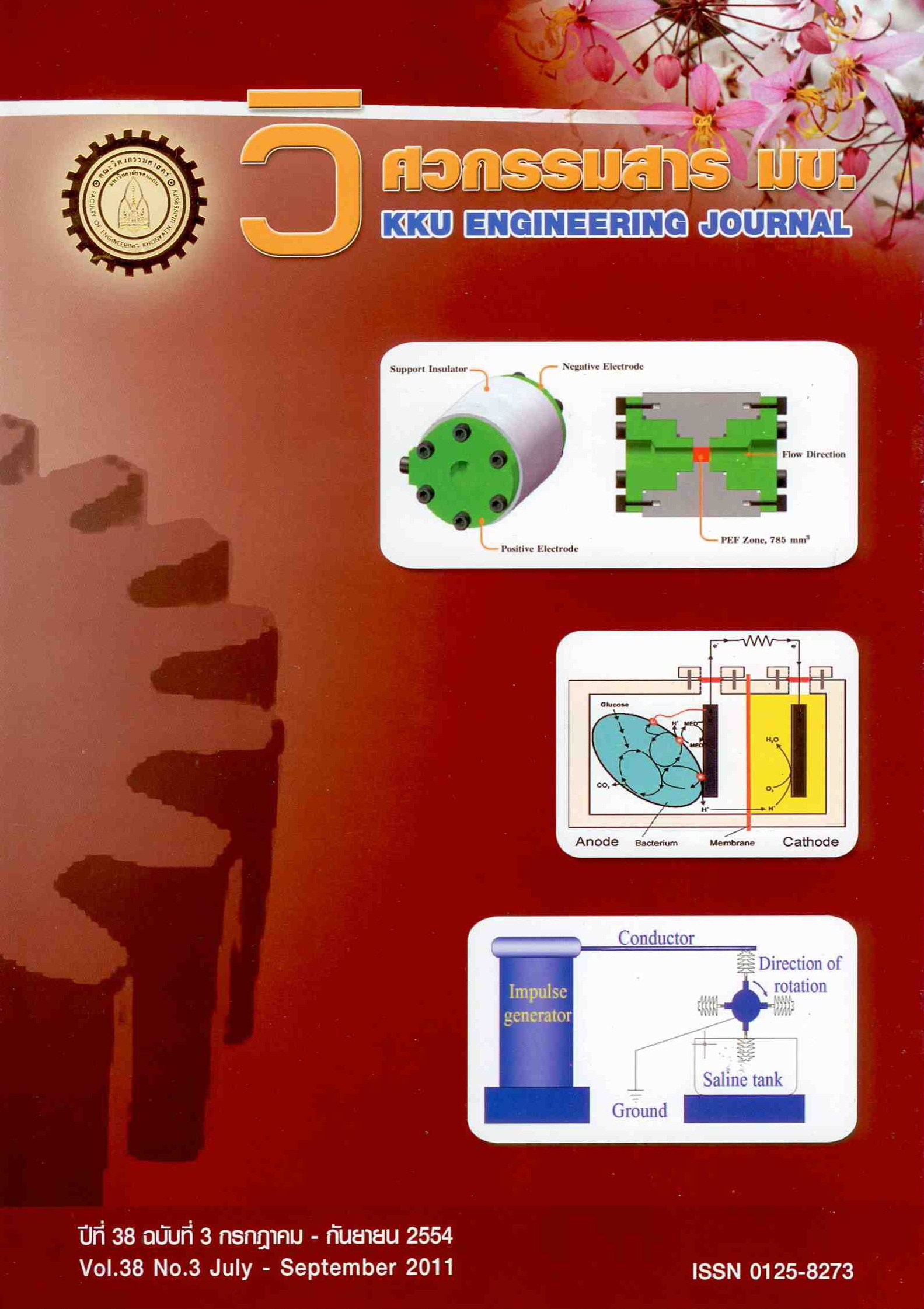Wood Plastic Composites from Oil Palm Wood and HDPE
Main Article Content
Abstract
The purpose of this research was to study and produce wood plastic composites material from palm
wood and waste plastic to increase the value of excessive material which could save resource indirectly. Palm
wood is a local material which is easy to obtain. Palm wood flour was combined with high density polyethylene
(HDPE) dust from waste drinking water bottles and maleic anhydride (MA) was used as an additive for a
compatibilizer at various weight ratios of wood flour, HDPE and MA which were 50:47:03, 40:57:03 and
30:67:03. The mixed materials were manufactured by a hot-press method at temperatures 130, 150 and
170 ๐C pressure 2,500 psi and investigated the mechanical properties of the composites material according to
the American society for testing and materials (ASTM) method which 5 specimens/treatment. The experimental
results were found that hardness, flexural strength, tensile strength, compressive strength and impact energy
absorption were increased by the ratio of HDPE and forming temperature which increased. The best
mechanical property of wood plastic was 30:67:03 at 170 ๐C. By comparing the best mechanical properties
with the commercial wood plastic (CWP), it was found that the tensile strength and impact energy absorption
of wood plastic was higher than that of CWP but hardness and compressive strength was lesser. However, the
flexural strength was similar to CWP. The total costs were 52.02 bath per piece for 30:67:03, 51.60 bath per
piece for 40:57:03 and 51.18 bath per piece for 50:47:03.
wood and waste plastic to increase the value of excessive material which could save resource indirectly. Palm
wood is a local material which is easy to obtain. Palm wood flour was combined with high density polyethylene
(HDPE) dust from waste drinking water bottles and maleic anhydride (MA) was used as an additive for a
compatibilizer at various weight ratios of wood flour, HDPE and MA which were 50:47:03, 40:57:03 and
30:67:03. The mixed materials were manufactured by a hot-press method at temperatures 130, 150 and
170 ๐C pressure 2,500 psi and investigated the mechanical properties of the composites material according to
the American society for testing and materials (ASTM) method which 5 specimens/treatment. The experimental
results were found that hardness, flexural strength, tensile strength, compressive strength and impact energy
absorption were increased by the ratio of HDPE and forming temperature which increased. The best
mechanical property of wood plastic was 30:67:03 at 170 ๐C. By comparing the best mechanical properties
with the commercial wood plastic (CWP), it was found that the tensile strength and impact energy absorption
of wood plastic was higher than that of CWP but hardness and compressive strength was lesser. However, the
flexural strength was similar to CWP. The total costs were 52.02 bath per piece for 30:67:03, 51.60 bath per
piece for 40:57:03 and 51.18 bath per piece for 50:47:03.
Article Details
How to Cite
Thanawattanasirikul, N., Ratanawilai, T., & Pochana, K. (2013). Wood Plastic Composites from Oil Palm Wood and HDPE. Engineering and Applied Science Research, 38(3), 285–296. retrieved from https://ph01.tci-thaijo.org/index.php/easr/article/view/7722
Issue
Section
ORIGINAL RESEARCH
This work is licensed under a Creative Commons Attribution-NonCommercial-NoDerivatives 4.0 International License.



